Some ways to improve Wi-Fi connection and speed up WiFi
Wi-Fi wireless network is one of the biggest benefits of using laptops instead of bulky desktop computers. Instead of always having to sit in one place so as not to run away from the range of the network cable, you can bring your laptop across the room and still be able to surf the web comfortably.
However, using Wi-Fi also brings many inconveniences. Common problems encountered when using Wi-Fi are slow network speed, unstable connection like when using traditional wired networks.
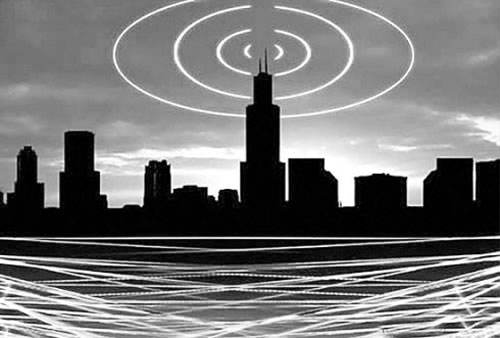
There are many effective methods you can do to improve your connection and stabilize your Wi-Fi network. Of course, the first condition is that you must own the Wi-Fi network you are using. If you are using 'temple ' Wi-Fi or stealing your neighbor's network, obviously you cannot and absolutely cannot. However, I don't have the right to ask for much.
In this article, we would like to offer simple, easy-to-implement methods, hoping you will feel more comfortable using Wi-Fi in your own home.
1. Use the latest Wi-Fi technology
One of the best ways for you to use the fastest Wi-Fi and also have the most stable Wi-Fi connection is to use as new technology as possible. Current wireless N standard routers (Wi-Fi 802.11n) are the newest Wi-Fi transmitters, with high performance, wide coverage and best compatibility. Make sure your current Wi-Fi transmitter is an N standard transmitter and that your computer must use an N standard wireless card to have a stable Wi-Fi connection.

2. Appropriate Router location
Although using Wi-Fi is more advantageous than a wired network in that you can receive signal in many locations in the house without having to worry about connecting wires, however, this does not mean that you can use Wi-Fi. Fi is 100% good as long as you are within the broadcast range from the transmitter.
Although devices like Wi-Fi transmitters look quite ugly and unattractive, that doesn't mean you can hide the router in any corner of the house. Place the Wi-Fi in an open space, higher than the places where you usually use your laptop. If you can adjust the router's antenna, the better. The best location for Wi-Fi in your home is the center of your home.
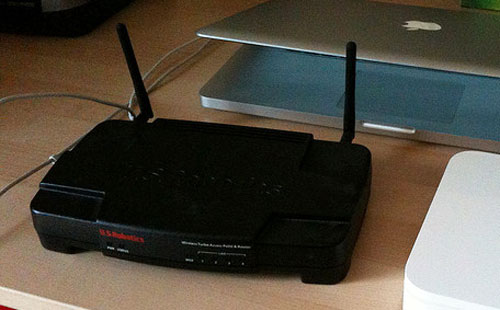
3. Select the appropriate Wi-Fi channel
This is probably rare in Vietnam when people still mainly use wired networks, however, if your neighbors also use Wi-Fi, their transmitters may cause interference to Wi-Fi. your. Wi-Fi transmitters can operate at a number of different frequencies, so use tools like Wi-Fi Stumbler or Wi-Fi Analyzer to find the most suitable frequency for your Wi-Fi. your house.
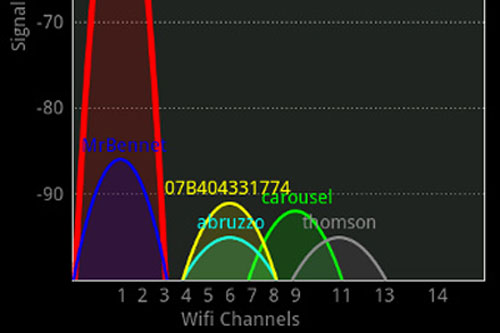
4. Avoid other electronics
Your neighbor's Wi-Fi transmitter isn't the only thing causing interference to your Wi-Fi network. Cell phones, cordless phones, or even microwaves can cause interference with your Wi-Fi. Buying additional anti-interference devices is one solution, however, if you don't really want to spend money to retrofit your home, moving appliances around the house will be a simple method that no less effective.
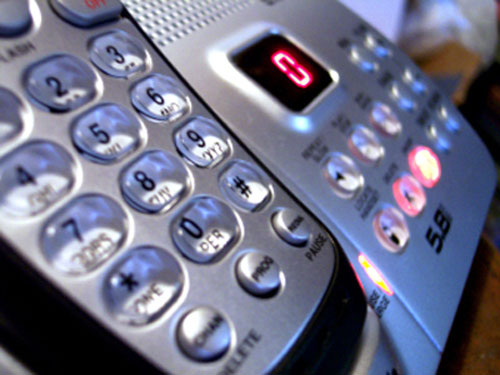
5. Prevent WiFi theft
Perhaps preventing Wi-Fi theft is one of the things that must be really paid attention to in Vietnam, a country famous for liking to use 'temple' items. You cannot trust even if you have set a password for your Wi-Fi, nowadays it is not difficult to find ways to hack Wi-Fi on the internet. Similarly, there are many ways to detect if someone is stealing your Wi-Fi.
Although passwords aren't really useful for stopping thieves who like to use other people's things, you can't leave your Wi-Fi open for everyone to use, as this will cause network problems. Your wireless becomes slow. Using a WPA password and changing it regularly can be an effective way to prevent Wi-Fi snoopers.
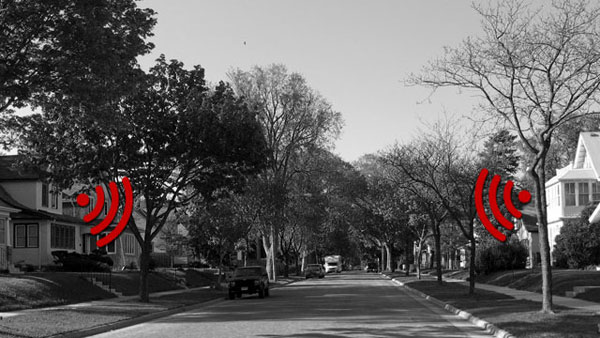
6. Software prevention
Bandwith-hogging software such as video chat, torrents, gaming. often make the connection slower. Of course when you are in a household, you are not the only one using Wi-Fi and other people can use the network for these purposes. Another possibility is that you want to use a certain software that needs to use the network, however, another software running at the same time is taking up all the network bandwidth, making the software you need run slower.
In these cases, use the Quality of Service (QoS) function. This software will divide, decide the necessity or priority for the software you have previously selected to see if that software is given priority over other software or not.
7. Enhance Wi-Fi range
With simple, classic methods like creating a set of small pans from beer cans or metal cardboard, you can help your Wi-Fi network reach even further. We really shouldn't laugh at this classic method. Although it looks crude and seems ineffective, this method also gives users some space without Wi-Fi around.
With just a little ingenuity with used soda cans, you can create a small trough to increase Wi-Fi range. Although the effect is not great, at least your Wi-Fi signal will be stronger and reach a little farther.
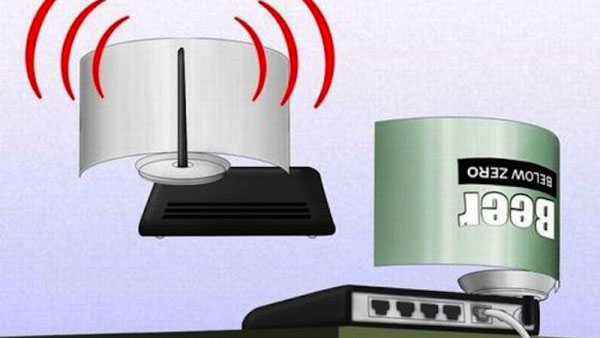
8. Use impact software
If the classic method of using an aluminum trough from a beer can doesn't satisfy you, it's time to install the DD-WRT firmware and hack a little on your Wi-Fi router. Not only will your Wi-Fi source be more secure and stronger, but it will also allow you to strengthen your Wi-Fi connection. Of course, this out-of-the-box installation can make your router more susceptible to problems, however, if you only broadcast more than 70 mW, you will not encounter any significant problems.
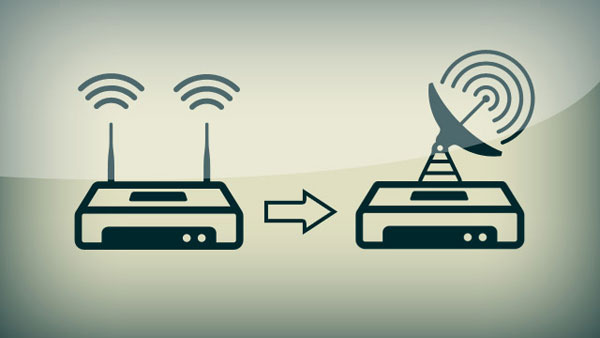
9. Set the router to automatically reset periodically
You should regularly check to make sure that your slow Wi-Fi is not due to the temperature of the transmitter being too hot, the firmware being too old or the download being overloaded. However, a simpler way that takes less effort is to Set the transmitter to automatically restart every 1 or 2 days.
Older, traditional time setters can also do this automatically. If you can't find a way to make the transmitter automatically restart, manually resetting it only takes a few minutes and the effect is not small at all.

10. Change/upgrade another router
Normally when you install internet, the network provider will provide you with a loaner device. These devices often only meet the needs of normal use. Therefore, if you want a better internet connection or WiFi connection, you need to equip yourself with a new router.
On the current market there are many router models with different purposes, some models provide good wall penetration capabilities while others optimize the connection for gaming. For large houses, TipsMake. com recommends using mesh devices to ensure a stable connection.
11. Use a WiFi signal amplifier
Nowadays, WiFi amplifier devices (WiFi Extenders) are no longer strange to users. These compact, cheap devices play the role of receiving WiFi waves and then amplifying (boosting) them to a larger space.
For example, if you place the main router on the 1st floor, a WiFi Extender device placed on the 2nd floor will help you have a more stable WiFi connection on the 2nd floor.
12. Get rid of unused equipment
Connecting too many devices to one WiFi network will also cause problems with your WiFi connection. Disconnect unnecessary devices to ensure that your WiFi network only prioritizes devices that need to be connected.
13. Check your device
Sometimes you have WiFi connection problems but the cause is not due to the WiFi network. Device malfunctions, such as a computer with a broken WiFi card or a smartphone having problems, will also cause the WiFi connection to be unstable.
14. Make sure your router has the latest software installed
Every electronic device has a platform control software (collectively called firmware) and WiFi routers are no exception. If the firmware is not updated, the device's performance will be affected and even pose a potential cybersecurity risk.
However, updating router firmware is not easy for ordinary users. Therefore, you should only update the router's firmware yourself if you have a little technical knowledge.
15. Call your carrier
This is the safest solution you can choose if your WiFi connection has problems. However, contacting the carrier can sometimes be very time-consuming because carriers often handle problems according to procedures. In many cases you will have to wait 1 to 2 days for network staff to come fix the problem for you.
16. Change network carrier or package
Sometimes the problem you encounter is simply that the package you are using does not meet your needs. This leads to the WiFi connection always being slower than your expectations. This can be resolved by choosing a different package that better suits your needs.
Additionally, you can consider changing your carrier in addition to changing your tariff plan.
You should read it
- How to speed up Wifi network, increase WiFi signal
- How to check who is using Wifi temple, your home WiFi theft
- How to secure WiFi network, increase security for WiFi
- Instructions for use and security of Wifi network
- How to set up Wifi priority mode on Android and iPhone
- How to hack your own WiFi network
- Secure WiFi in enterprise environment from basic steps
- How to hide WiFi network in Windows 10
May be interested
- 8 ways to increase Wifi speed for laptops
 the wifi network is too slow, affecting your work and you are looking for a way to increase the wifi speed for your laptop. see the article below, huy khang pc believes
the wifi network is too slow, affecting your work and you are looking for a way to increase the wifi speed for your laptop. see the article below, huy khang pc believes - 7 Ways to fix wifi connection loss on latest laptop
 wifi is unstable or disconnected, making you most uncomfortable, especially when you are working or playing games? so what is the cause of this situation? how to fix it?
wifi is unstable or disconnected, making you most uncomfortable, especially when you are working or playing games? so what is the cause of this situation? how to fix it? - Android 8.1 will indicate whether WiFi is strong or weak before connecting
 android 8.1 will help you decide whether to connect to found wifi via connection speed.
android 8.1 will help you decide whether to connect to found wifi via connection speed. - How to set up preferred WiFi connection mode on Mac
 on macs, it automatically connects to healthy wifi networks in the list of wifi devices captured. thus, we will not worry about the flickering network, the weak network will use stable connections.
on macs, it automatically connects to healthy wifi networks in the list of wifi devices captured. thus, we will not worry about the flickering network, the weak network will use stable connections. - Tips to speed up the Internet, connect to the network faster
 there are many factors that affect the speed of internet connection on your computer, one of the most important factors is the speed of the line being used. however, you can change the connection speed by changing the settings on windows to partially improve the speed of internet connection.
there are many factors that affect the speed of internet connection on your computer, one of the most important factors is the speed of the line being used. however, you can change the connection speed by changing the settings on windows to partially improve the speed of internet connection. - How does a tri-band router improve Wi-Fi speed?
 upgrading to a high-speed internet connection won't automatically speed up your network. you'll also need a router that can take advantage of new wi-fi technology, has more wi-fi bands, and supports modern features.
upgrading to a high-speed internet connection won't automatically speed up your network. you'll also need a router that can take advantage of new wi-fi technology, has more wi-fi bands, and supports modern features. - Difference between WiFi 5, WiFi 6 and WiFi 6E
 having fast wifi has become indispensable in our daily lives. from surfing the internet and working from home to online gaming and streaming netflix, it all depends on a strong wifi connection.
having fast wifi has become indispensable in our daily lives. from surfing the internet and working from home to online gaming and streaming netflix, it all depends on a strong wifi connection. - How to speed up Internet connection with cFosSpeed
 cfosspeed is a software that speeds up internet connection, reduces the latency of the connection and increases the connection speed by about 3 times. especially for those who play online games, cfosspeed will support you so you can experience the game without any network problems.
cfosspeed is a software that speeds up internet connection, reduces the latency of the connection and increases the connection speed by about 3 times. especially for those who play online games, cfosspeed will support you so you can experience the game without any network problems. - 8 simple ways to speed up Windows 7
 windows 7 is an operating system that is highly rated for speed, but there are still many different ways to improve the speed and performance of this operating system, especially on machines with not too strong configurations. the following article will help you do that.
windows 7 is an operating system that is highly rated for speed, but there are still many different ways to improve the speed and performance of this operating system, especially on machines with not too strong configurations. the following article will help you do that. - How to fix the problem of not connecting to WiFi in Windows 10
 having a network connection is very important because a lot of the work depends on a stable internet connection. there can be a variety of reasons why your connection is not working properly, and these problems can be easily resolved.
having a network connection is very important because a lot of the work depends on a stable internet connection. there can be a variety of reasons why your connection is not working properly, and these problems can be easily resolved.










 What is 1.1.1.1? How does it speed up the Internet and secure data when browsing?
What is 1.1.1.1? How does it speed up the Internet and secure data when browsing? How to create WiFi Hotspot in Ubuntu
How to create WiFi Hotspot in Ubuntu How to turn an old router into a wireless bridge
How to turn an old router into a wireless bridge 6 best DNS servers to improve online safety
6 best DNS servers to improve online safety 5 reasons to upgrade to a Wi-Fi 7 router
5 reasons to upgrade to a Wi-Fi 7 router Microsoft begins testing Wi-Fi 7 on Windows 11
Microsoft begins testing Wi-Fi 7 on Windows 11